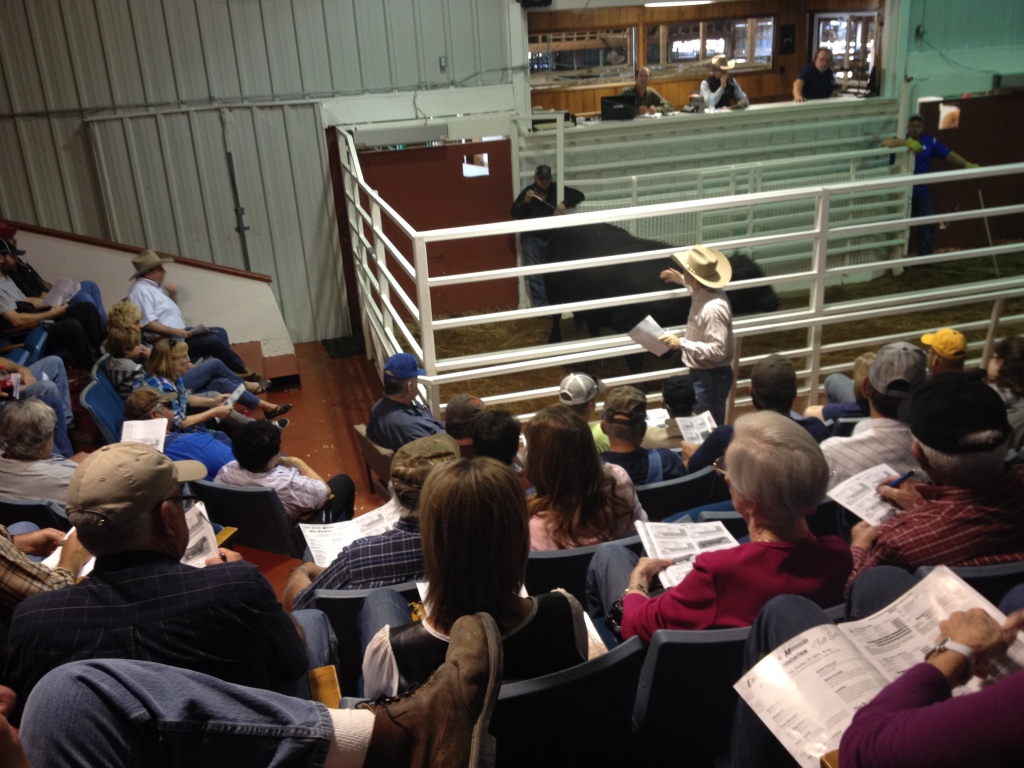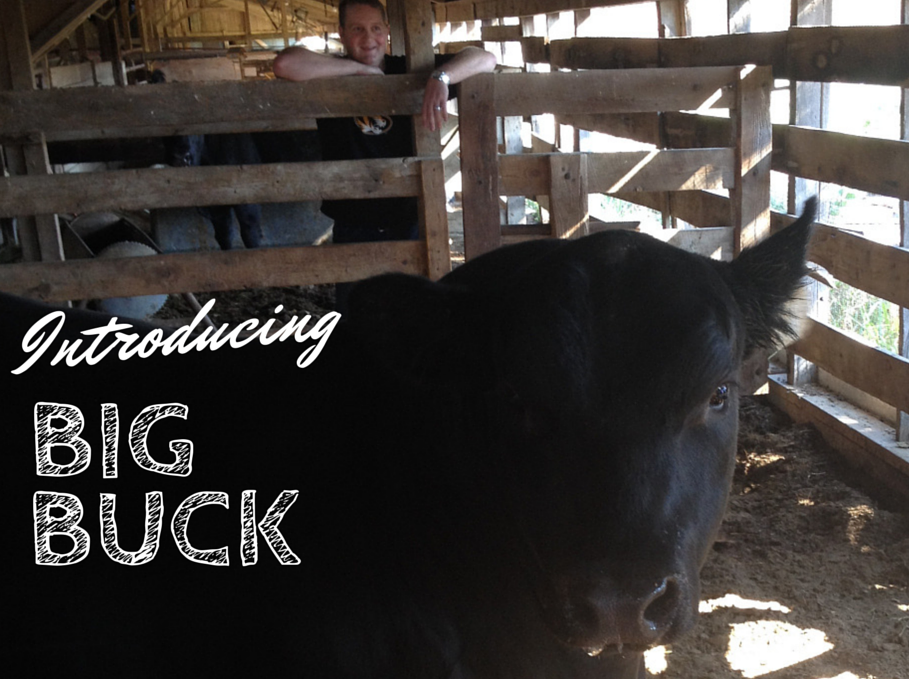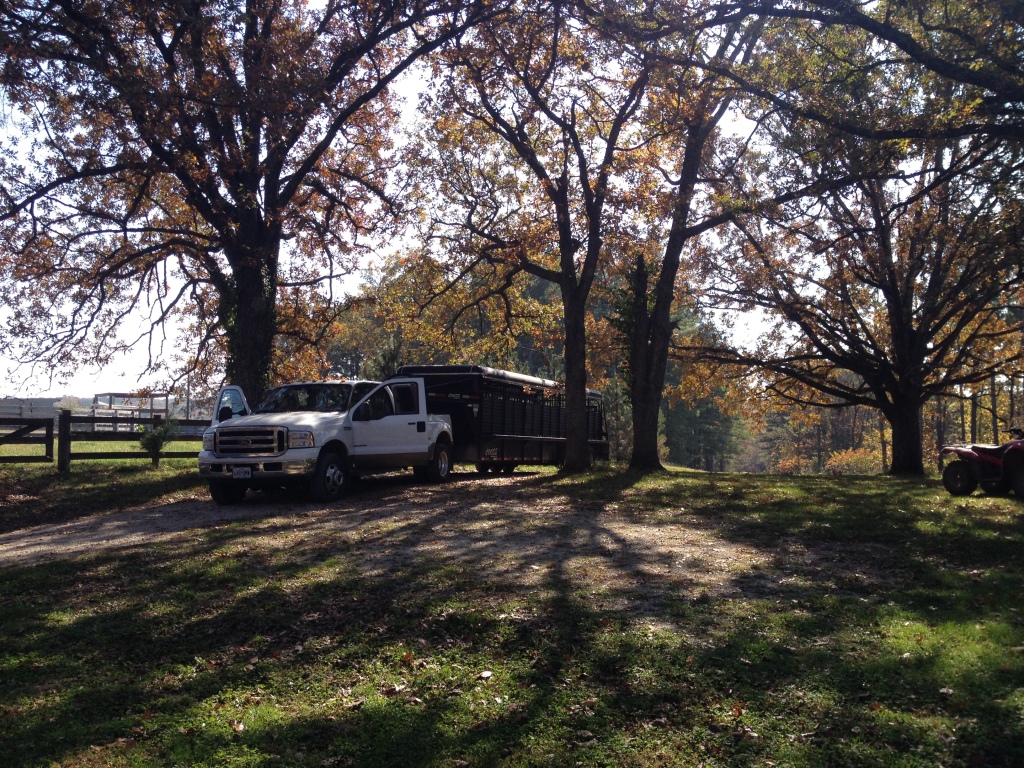If you’ve been following our Facebook page, you saw that we bought a new bull named Big Buck.
Since buying a bull is a unique process that most people have never done, I thought I’d share a little about it.
Keep in mind, I’m writing this from my city-girl’s perspective, but Matt reviewed this post in advance to make sure that it’s accurate from a farmer’s perspective too.
Why is buying a bull important?
First things first, it’s important to understand that buying a bull is a really BIG thing.
The best analogy that I can think of is that it’s sort of like buying a car. There is lots of research that goes into it in advance, and like a car, you have to get a good one that will be reliable.
A bull costs thousands of dollars and is expected to do his job for about 6-years, so this is a serious purchase.
What do you look for in a good bull?
Every farmer has different criteria on what they look for in a good bull, and what will work best for their herd. Our cattle herd is Angus-based, so we like Angus bulls.
How do you research a bull before you buy?
Before a big bull sale, a thin catalog arrives in the mail that is from the organizer of the sale. We bought Big Buck from our local sale barn (a sale barn is a place farmers go to buy animals like bulls, cows and horses), so the catalog came from the sale barn.
The catalog has information about each animal such as age, weight, breed, genetics, and pedigree. Plus, you can arrive at the sale early and walk around the barn to get a good look at each bull before you make your final purchase decision.
What does a bull sale look like?
There are all different types of way to buy a bull – online, at a local auction, and from an individual owner, just to name a few.
Our sale was an auction.
If you’ve ever been to a County Fair or State Fair, you can probably visualize what it looked like. If you’ve never been to the Fair, I’ll do my best to describe it.
Our local sale barn reminds me of a movie theater, except there is no movie screen. It’s auditorium-style seating with movie-theater style chairs. Instead of a screen, you look down on a large cattle corral.
Then, the bulls parade in-and-out of the corral. One bull is shown at a time, and since the area is so large, the bull walks all around it and lets everyone get a good look at him.
While the bull is walking around, the auctioneer starts the bidding. Then, just like a normal auction, people bid on each animal until it’s sold.
A head nod or flick of the hand is a bid, so this is when I’m always extra careful with my hands!

We bought Big Buck from an auction. The auctioneer is in the front and faces the audience so he can watch for bids.
How do you take a bull home?
After you buy a bull, it’s up to you to get him home. There’s no delivery.
We went to the sale with the intent of purchasing a bull, so we brought our trailer with us. Matt loaded Big Buck in the trailer and we drove home.
What does a bull do once he gets to the farm?
Bulls on our farm have a good life – really good. They get to hang out with bulls, cows, and heifers in big green pastures.
Here are some fun facts that will give you a glimpse into a bull’s life on the farm.
- A bull has one job and only one job. I’m sure you can figure out what that is 🙂
- When they’re not “working”, they’re in a bull’s version of a man-cave. They are in their own grassy field, and all they have to do is eat and sleep.
- Because the best times of the year to have a calf are in the Spring or Fall, bulls are allowed in the field with the cows at very specific times of the year. The day they’re let in and out of the field is a very BIG day. In fact, it’s circled in red on the calendar. It’s that big.
- On average, a bull only “works” about five months out of the year. They’re let in the field in February and removed in April, and then let in again in August and removed in October.
- One bull can “service” (yes, that’s how we say it on the farm) about 25 cows in five months.
- Cows are great at playing hard-to-get. A bull will follow a cow approximately 10 miles before being able to do his job.
- A bull can tell if a cow is in heat by the way her urine smells.
- Bulls can lose up to 300-400 pounds when they’re in the field with the cows because they’re following her around and “working” so much.
- Since cows and bulls range in size, farmers will sometimes split the herd and decide which bulls and cows will be together. This is done to protect smaller cows from having calves with larger bulls. If that does happen, it sometimes leads to difficulties in pregnancy, which we try and avoid for the safety of the cow and calf.
- A good cow has a calf every year.
- We purchase our bulls from other farmers and don’t raise our own because it promotes genetic diversity of the herd. After all, we don’t want kissin’ cousins. 🙂
- Some farmers use AI technology (artificial insemination) to impregnate their cows. There are pro’s and con’s to both AI and the old-fashioned way, but we like the old-fashioned way the best.
There you have it. That’s what it’s like to buy a bull and why it’s so important.
Have a question? Let us know!



